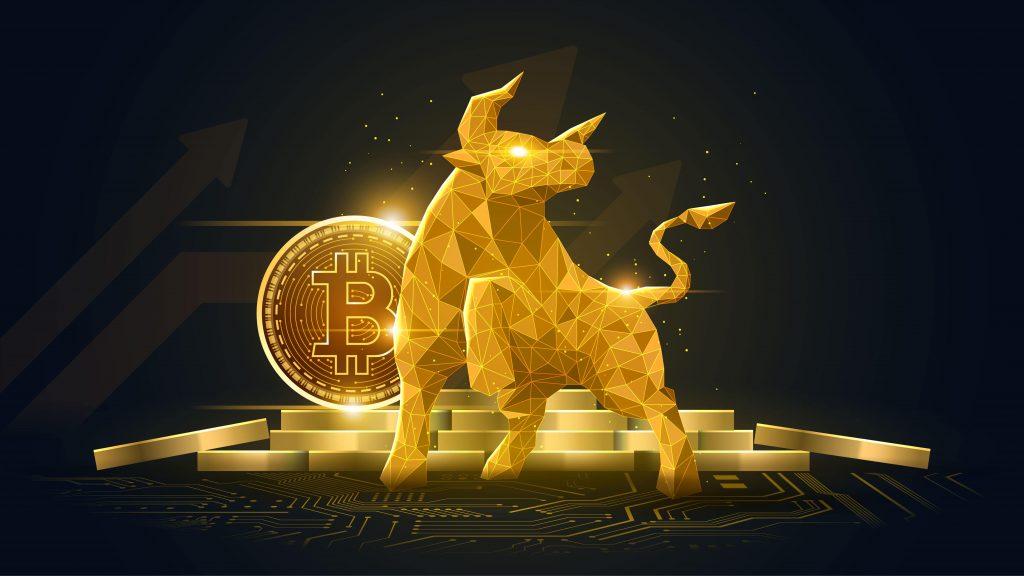Blockchain technology is a fantastic example of human creativity. However, it has its limitations, just like any other type of technology. Blockchain technology was influential in developing Bitcoin, a decentralized digital financial system, and other prominent cryptocurrency networks.
Today, business executives and experts envision radical, innovative methods to use blockchain technology to link the world economy. If you find yourself wondering- What is Blockchain? Here is everything you should know.
What Is a Blockchain?
A blockchain is a ledger or distributed database system divided among a computer system’s nodes. All data in a blockchain is stored digitally. Blockchains are essential for cryptocurrency systems such as Bitcoin as they provide a decentralized and secure system to maintain transactions. Blockchain is viewed as a possible disruptor of the status quo in the commercial industry, with the ability to innovate in transactions, revolutionize sectors, and drive global economic transformation.
How Blockchain Works?
A blockchain hosts thousands of transactions on a peer-to-peer and distributed database. The transactions are referred to as “blocks.” The entire blockchain network is secured by cryptography. Each transaction is validated and time-stamped by authorized members using the database. When a transaction is made, you cannot delete or edit it. After a transaction is made, it creates an immutable audit trial.
Why Blockchain is secure is because the only way to change a transaction is by adding a transaction, thereby creating a chain. Most organizations use a permissioned blockchain where participants are authorized to participate in the system, where every user maintains a record of all transactions made on the system. Therefore, companies that need real-time and secure records of transactions that are shareable can hugely benefit from Blockchain.
Having no single point of vulnerability, Blockchain provides a more secure and easily accessible form of the financial system. New blocks are created in the system by “miners” through a process known as “mining.” Miners utilize complex math problems to validate transactions.
Explaining hype around Blockchain
When it comes to cryptocurrency, Blockchain has been a significant component in carrying out financial systems. Another perk of Blockchain in cryptocurrency is that one can anonymize transactions on the distributed ledger system. Blockchain also enables us to avoid the double-spending issue as it prevents two people from using the same cash simultaneously.
Unlike traditional banks that allow users to make transactions through two different places at the same time (card and a centralized database on the internet that records every transaction made), Blockchain has no single database that holds the answer to who owns which money. Therefore, this is how Blockchain is changing finance and providing us with a more secure financial system.
Bitcoin was launched through Blockchain in 2008 as a form of cash that one could use without a central authority. Although it wasn’t the first form of cryptocurrency, it significantly impacted the world. The second generation of cryptocurrency has given birth to Ethereum and Ripple. Although relatively new, people appreciate the solutions Blockchain gives us. People skeptical about its usage are beginning to understand the issues Blockchain could overcome.
History of Blockchain
The hype behind Blockchain provides the system with the potential to become the ultimate record-keeping system in the world. Although launched just a decade ago, Blockchain has taken the world by storm. Blockchain was created under the pseudonym of Satoshi Nakamoto by people whose real identities remain unknown. The history of Blockchain started in 1991. The concept of Blockchain, a chain of blocks secured by cryptography, was defined for the first time by Stuart Haber and Scott Stornetta.
Then in 1998, a computer scientist named Nick Szabo worked on decentralized digital currency or something known as ‘bit gold.’ In 2000, a theory of cryptography was released by Stefan Konst, along with which he gave ideas for implementation. In 2008, a group of developers published a white paper under the pseudonym Satoshi Nakamoto establishing a blockchain model.
In 2009, the first Blockchain was implemented as the public ledger using bitcoin for transactions. In 2014, authorities decoupled the money from blockchain technology and investigated its possibilities for other financial and inter-organizational transactions. Blockchain 2.0, which refers to uses other than cash, was born. The Ethereum blockchain architecture inserts computer code into units representing financial products like bonds. These are referred to as smart contracts.
Types of Blockchain
There are three main types of Blockchain. Each has its perks as well as disadvantages.
Public Blockchain
It is a permissionless blockchain where anybody is allowed to participate without restrictions. Most cryptocurrencies run on public blockchains.
Private Blockchain
This Blockchain allows companies to determine who can access blockchain information by setting controls. Therefore, people who have been granted access can participate.
Federated Blockchain
This type of Blockchain has consensus processes controlled by a set of nodes or stakeholders pre-selected.
Advantages and disadvantages of Blockchain

Despite its intricacy, Blockchain’s possibilities as a decentralized method of record-keeping are nearly limitless. Blockchain technology may have benefits beyond those listed above, ranging from increased user security and confidentiality to reduced processing fees and fewer mistakes. If you are wondering- Is Blockchain safe? The simple answer would be that it is. However, there are some benefits and drawbacks too.
Pros
- Increased accuracy as it does not involve any human involvement.
- Eliminates third-party verification, thus reducing cost
- Tampering with the network is avoided by decentralization
- The system is private, efficient, and secure
- It has transparency
- Provides a secure alternative to traditional banking for countries with underdeveloped governments
Cons
- The cost of the technology is high (such as mining)
- The amount of transactions per second is low
- Susceptible to use in illicit activities
- Regulation laws remain uncertain
- There are data storage limitations
What is Blockchain, and how does it work for dummies?
In simple terms, a blockchain is a ledger where data is stored in the form of blocks, every node of the system stores a replica of the entire system or database. Blockchain stores the record of time-stamped information or series of information managed by a network of computers, unlike a centralized system such as a bank. All the information in the Blockchain is kept safe as it uses cryptographic encryption.
Everything throughout this system is transparent. The information cannot be changed, copied, or deleted. Transactions in the system are visible to every user. Therefore, we can say that Blockchain is a secure and reliable technology that hosts a sequence of blocks or transactions that is distributed among users.
What is blockchain technology with example?
To put this simply, let us take an example, suppose an organization X wants to send money to another organization Y, to pay for an invoice related to purchasing some product. Therefore, organization X puts a transaction in the blockchain database, which creates a block.
This block of the transaction is visible to all users of the network. When every member accepts or validates the transaction made by organization X, the transaction is added to the chain of transactions in the network. Therefore, the transaction is accepted, and the money is transferred to organization Y. This secure blockchain system ensures that hackers and fraudsters are kept at bay.
All transactions made in the database are replicated throughout the network of members. Therefore, they are visible on every user’s computer. That enables a distributed ledger system to be shared across numerous locations, companies, or countries.
What is the purpose of the Blockchain?
A blockchain is a digital ledger that uses data structure to enhance how we transact. It enables users to securely alter the ledger without the assistance of a third party. It enables free cryptocurrency via a decentralized ecosystem. As it is a distributed ledger, it has a high level of transparency.
As a result, rather than unique themes, our network participants utilize the same material. Because Blockchain eliminates the need for as many third parties or mediators to offer guarantees, the expense can be decreased, provided we reduce the technology costs. This system provides new digital authentication and authorization capabilities that meet the demands of numerous centralized administrators.
As a consequence, it makes it possible to establish new digital ties. Blockchain aims to enable sharing and recording of digital data without editing. A blockchain serves as the basis for immutable ledgers or logs of transactions that cannot be changed, removed, or destroyed.
Why do we need Blockchain?
The rapid growth of blockchain technology sheds light on one question- Why is Blockchain important? Blockchain solves many issues we once faced, such as double spending, fraud, retrieving lost, high transaction fees, etc. Blockchain enables us to make secure transactions through its system as the authenticity of every transaction is approved by all participants.
A study by Pew Research Center finds that Americans’ trust in the government is at an all-time low. The study finds that only about one-quarter of American citizens in Washington believe that they have trust in the government, and only 18% of Americans believe that they can trust the government to do what is correct most of the time.
Blockchain provides transparency through decentralization, allowing participants to see information and verify data. Blockchain also prevents data theft and hacking. Blockchain helps streamline processes and decrease the audit burden. The larger a blockchain network’s user base grows, the more trust is built.
That is true not only because we’ll have more computing power at our disposal to verify transactions but also because we’re creating an ecosystem where use cases are connected between goods that can coexist to shape a workflow, each of which offers a unique solution to a real-world issue that is resolved on-chain.
Who invented Blockchain?
Stuart Haber and W. Scott Stornetta were two mathematicians who aimed to design a system where users could not manipulate documentation time-stamps and proposed blockchain technology in 1991. Nick Szabo, a cryptographer, suggested utilizing a blockchain to protect a digital payment system called bit gold in the late 1990s.
Eventually, a whitepaper was published outlining a decentralized peer-to-peer system that had the potential to avoid double spending and track and validate transactions made digitally. That was the beginning of blockchain technology and bitcoin.
What is Blockchain in cryptocurrency?
Blockchain is the technology through which cryptocurrency exists. Among the cryptocurrency on the Blockchain, bitcoin is the most famous, stored by users in the blockchain wallet, and it is the one because Blockchain was invented. Furthermore, digital currency or a medium of exchange such as the US dollar uses encryption technology to utilize the creation of monetary units and to validate the transfer of funds.
If you are unsure of the distinction between Blockchain vs. bitcoin, you should note that Blockchain is the technology that allows cryptocurrencies to exist (among various things). Bitcoin is the most well-known cryptocurrency, and it was blockchain technology that established Bitcoin.
Conclusion
Blockchain, a groundbreaking technology, has various applications in various businesses and domains. While some companies have already begun incorporating Blockchain into their operations, many are still researching the best ways to get started.
Blockchain is a relatively new phenomenon in technology, but it is unquestionably the one to watch. Even in its early phases, the technology has achieved enormous appeal, beginning with its initial use of cryptocurrencies. With each new day, future directions of application are identified and evaluated. That is how Blockchain is changing finance. When technology is widely embraced and approved worldwide, it will change how we live today.






